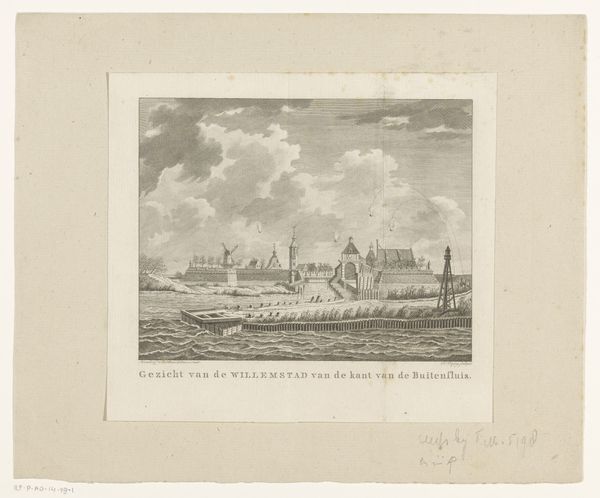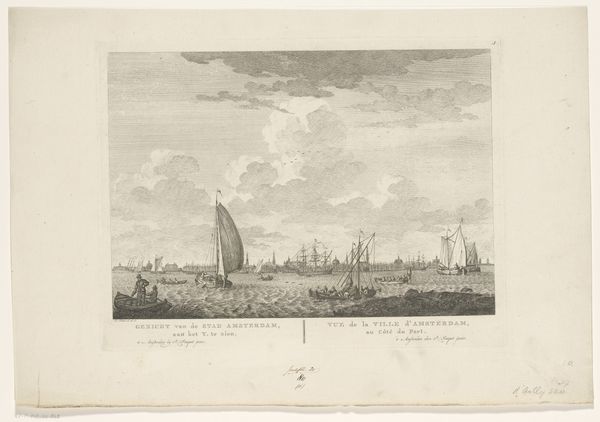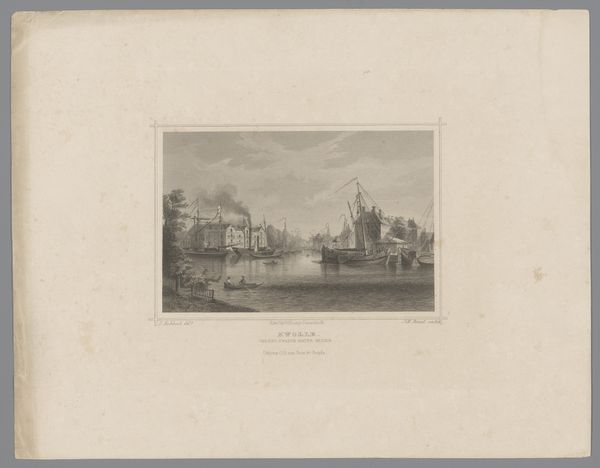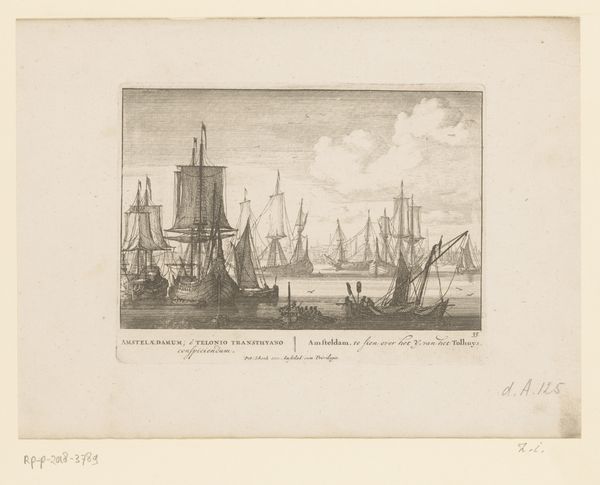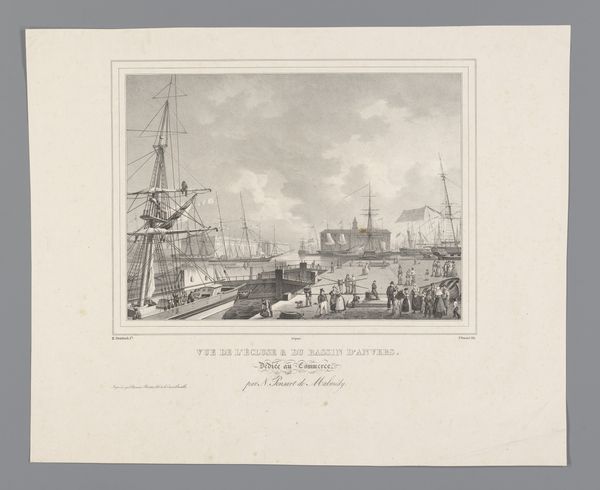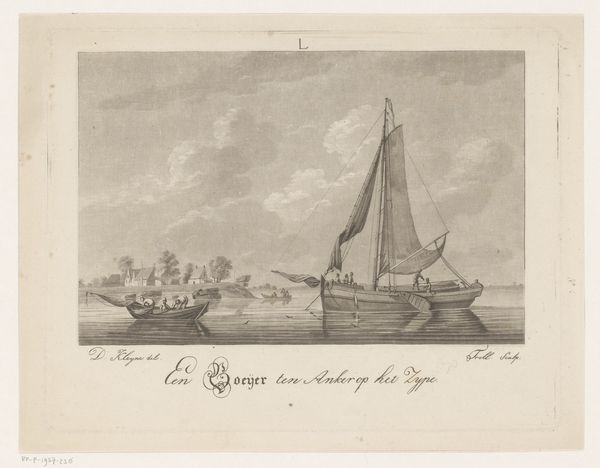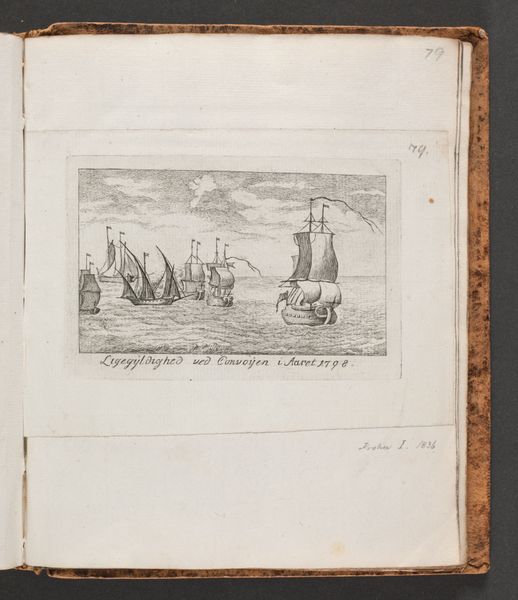
drawing, print, etching, paper
#
drawing
# print
#
etching
#
landscape
#
paper
#
genre-painting
#
realism
Dimensions: height 86 mm, width 111 mm
Copyright: Rijks Museum: Open Domain
Editor: This etching from sometime between 1786 and 1792 by Carel Frederik Bendorp, entitled "View of Fort Liefkenshoek," gives a real sense of daily life by the water. I'm curious, what aspects of this work stand out to you? Curator: For me, the most striking element is the clear depiction of labor involved. It’s not just a pretty picture; you see people actively working. The boats are tools, transportation, and sites of labour. Consider how the windmill operates – this scene becomes an active hub of economic exchange and a reflection of social production. Editor: That's interesting. I hadn't thought about it in terms of labour. Curator: And notice how Bendorp rendered the textures, think about the process of etching itself – it’s an industrialized form of image production compared to painting. What does the use of etching as a medium communicate about the intention behind creating this view? Does it elevate the everyday or democratize the image? Editor: So, the material – the etching – becomes part of the meaning? Curator: Exactly! And what kind of consumer might be drawn to this type of image? Editor: Someone perhaps interested in a practical view, something less romanticized? A merchant, maybe? Curator: Precisely. So, we move beyond simply admiring the landscape to understanding it as a product of material and social conditions. This isn't just aesthetic appreciation. It’s about the relationship between art, labor, and capital. Editor: I'm beginning to look at it as less of a quaint scene and more of a document of industry and a society structured by production. I'll never see landscapes the same way again. Curator: Hopefully! Material concerns in art often help unlock unseen narratives about how our world is constructed, bought, and sold.
Comments
No comments
Be the first to comment and join the conversation on the ultimate creative platform.



